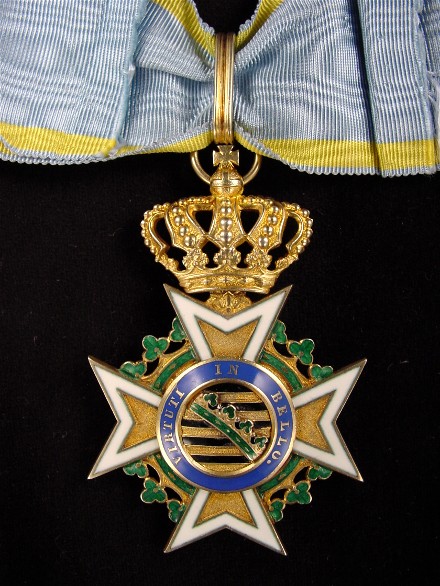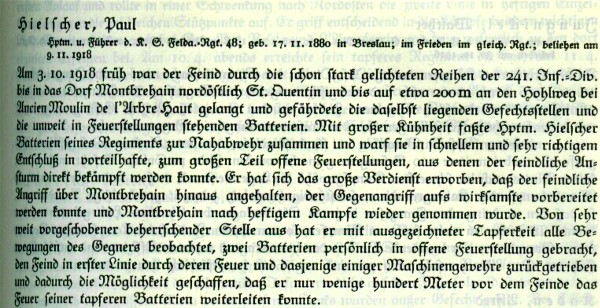|
Reissuing the Military St. Henry
Order in 1807 went back to the orders statutes from
1768. The reason to do resulted from Saxony's new
alliance with the Napoleonic France an the need to
decorate and honor France's military leaders. Saxony had
somehow trouble to choose the right alliance like in
1866. Compared to its
relatives the Bavarian Military St. Josef Order, the
Wurttemberg Military Merit Order and of course the
Prussian Pour le Mérite the Military St. Henry Order
This order was certainly one of the most important
Orders in Order history. This gets even more clear once
looking at the total number of awards.
As all other order decorations the
St. Henry Order underwent a number of design changes
over time. Being manufactured in pure gold through most
of its time the order was then made from gilt silver
during the whole period of the First World War. His
above mentioned relatives had at least been made from
pure gold for the initial WWI years. The two commander
cross examples shown below are prime examples for the
Saxon way of saving money.
Both pieces are hollow made. This
was the proper practice to save even more money besides
just to switch from gold to silver. Both official
licensed court jewelers followed this practice:
G.A.Scharffenberg and A.Roesner.
Number of total awards during WWI
for the Commander 1st class (with breast star) and 2nd
class:
|
Year |
Commander 1st class (with breast star) |
Commander 2nd class |
|
1914 |
1 |
1 |
|
1915 |
2 |
19 |
|
1916 |
2 |
39 |
|
1917 |
3 |
39 |
|
1918 |
6 |
55 |
|
total |
14 |
153 |
All pictures can be super sized if
clicked on. Please compare the pieces by paying
attention to those little differences generated from
true hand manufacturing those days yet following exactly
the rules set up through the orders statues. Each
manufacturer had basically his own "handwriting".
|
 |
 |
|
above: Commander Cross
made by Scharffenberg in gilt silver (Avers and
Reverse)
below: The 1939
reissued statement of the awarding of the
commander 2nd class of the Military St. Henry
Order to Captain Paul Carl Hielscher on November
09, 1918

below: Excerpt from
the book "Der Kgl. Sächsische Militär St.Heinrichs
Orden 1736-1918", 1937, Oberst a.D. Georg Richter

Hielscher, Paul
Captain and leader
d.K.S. Field Artillery Regiment 48; born Nov 17
1880 in Breslau; during piece time served same
Regiment; honored Nov 09 1918
The
enemy broke through the thin lines of the 241
Infantry Division on Oct 03, 1918, in the village
of Montbrehain, north east of St.Quentin and
approached close to 200 m a narrow pass at Anciem
Moulin de l'Arbre Haut threatening the command
post and guns of the 48 Artillery Regiment.
Captain Hielscher ordered all guns into a more
favorable position in order to use his long range
guns for close combat from quite open positions.
He earned great merit by doing this, since the
attack was stopped a counterattack was launched
and Montbrehain recaptured after heavy battle. He
showed his bravery from a very much exposed
position watching the enemy and personally lead to
batteries in open fire to push the enemy including
their mashine guns back. This created also the
possibility to command his own artillery fire only
100 m close to the enemy. |
© A.
Schulze Ising, XII/03 | 


